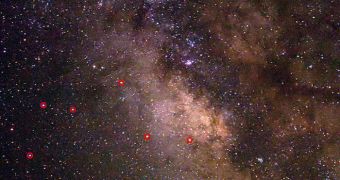The bright B spectral class star S2 has been observed by astronomers since 1995, because it is revolving around the radio source known as Sagittarius A, which most likely is the supermassive black hole at the core of the Milky Way.
Given that the object spins around the dark behemoth once every 16 years, it has already concluded a full orbit around the radio source since being discovered.
This allows astrophysicists to use it to conduct a wide variety of tests and measurements, most of which are related to testing Albert Einstein's Theory of General Relativity.
Among its most important points is the fact that the orbit of an object located close to a star or black holes exerting a strong gravitational pull do not respect the rules of classic astronomy.
Generally, Kepler’s 3rd law and Newton’s law of gravity can be used to predict how an object's orbit will carry on in the future. But these calculations are not true in the case of planets or stars circling around black holes or extremely massive stars.
For example, the variations t in S2's orbit that were recorded over only 16 years are a clear indicator that Einstein was right to say massive objects with excessive gravitational pulls deform the fabric of space-time around them.
And S2 is circling Sagittarius A at very close range. For comparison with our solar system, the star is located about the same distance Pluto orbits our Sun.
What makes this system worth studying is the fact that Schwarzschild radius around the supermassive black hole extends about the same distance as the orbit of Mercury.
The radius is the rough equivalent of the black hole's surface, the limit beyond which not even light can escape the massive gravitational pull the crushed globe of matter produces.
The particular black hole at the core of the Milky Way has the mass of about four million Suns, experts say. Knowing this, and the fact that S2 travels at 5,000 kilometers per second in its orbit, allows scientists to test some actual observations against theoretical predictions.
Researchers will for example focus on detecting sings of dark matter in the system, as well as on isolating and studying the effects of general relativity on S2.
Most likely, studying this piece of the heaven is a long-term effort, one that will involve keeping tabs on S2 for many years and orbits, Universe Today reports.

 14 DAY TRIAL //
14 DAY TRIAL //